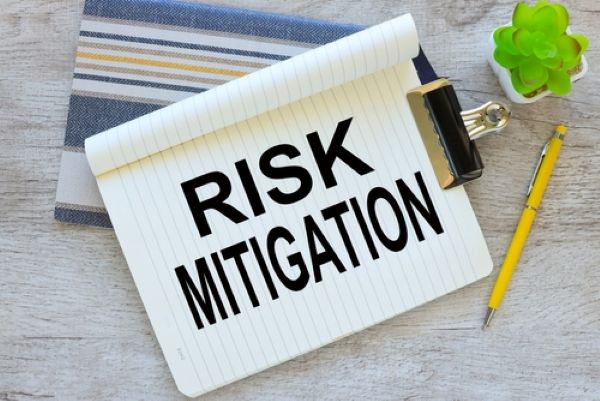 |
| By | September 1, 2023 |
As an employer, you are aware of the indispensable nature of workers' compensation insurance in the business landscape. Nonetheless, the rising costs of workers' compensation premiums can put a significant strain on your financial standing. Currently, the balance of power in the workers’ compensation insurance industry rests with the insurers, placing employers at a disadvantage.

Businesses often find their efforts to control costs thwarted by forces seemingly beyond their control. Fortunately, it doesn’t have to be this way. Business owners can successfully reduce the workers’ compensation experience modification factor (E-MOD) and bring down premiums by drawing on effective risk management strategies.
Let’s explore the factors that thwart your chances of lowering your workers’ compensation E-MOD ratios while providing you with key steps to mitigate potential safety risks and hazards.
How E-MOD Equation Affects Workers’ Compensation Costs
To truly understand how to rein in your workers’ compensation costs, it’s important to understand the correlation between the E-MOD ratio and its impact on your premiums.
The E-MOD ratio is useful to compare your company’s workers’ compensation claims history to the average claims experience for similar businesses. It serves as a benchmark for insurers to assess the likelihood of future claims and calculate premium rates accordingly.
This ratio operates on a scale where a factor of 1.0 is considered the average for the respective industry. A factor greater than 1.0 indicates that your business has a worse-than-average claims experience, resulting in higher premiums. On the contrary, a factor below 1.0 accounts for a better-than-average claims experience and may lead to lower premiums.
For example, suppose your business has an E-MOD of 1.25. This means your claims experience is 25% worse than the average for similar companies in your industry. Therefore, your workers’ compensation premiums will be 25% higher than those with an E-MOD of 1.0.
Insurance companies use specific formulas to determine the E-MOD ratio, taking into account factors such as the number and severity of past claims, the size of your company, and the industry you operate in. Insurers deem that a company’s claim history is a bellwether of future losses and larger risks.
Factors Influencing Your E-Mod
Several factors contribute to your E-MOD rating, including:
- Frequency and severity of workplace injuries: The more claims filed, the higher the cost of those claims, thus negatively impacting your E-MOD ratio.
- Classification codes and job hazards: Different industries and job roles have varying levels of risk. Understanding job classifications and associated risks can help you identify strategies to reduce workplace injuries.
- Claims management: Promptly reporting and managing claims, providing appropriate medical treatment, and implementing return-to-work programs can all positively affect your E-Mod.
For these reasons, it’s important to control your E-MOD risks pertaining to safety performance and claim management. The good news is that you have the power to actively modify your experience modification factor. With an appropriate risk management strategy, it is possible to reduce your premium costs in half.
What Are the Best Strategies to Reduce Your E-MOD?
Reducing workplace injuries and lowering your E-MOD will not only make your company save money, but it will also see an uptick in productivity and employee morale. From implementing safety programs and training initiatives to promoting a culture of workplace safety, we’ll explore actionable steps you can take to regain control over your workers’ compensation costs.
Here are some actionable strategies you can consider:
Establish a Proactive Safety Program
Prioritize workplace safety by developing and implementing a comprehensive safety program. This plan should encompass regular safety training, ongoing hazard assessments, and a reporting system for potential risks.
Implement Effective Injury Prevention Measures
Identify the most common workplace injuries and take proactive measures to prevent them. This may include providing personal protective equipment (PPE), improving ergonomics, and implementing safety protocols tailored to your specific work environment.
Engage Employees in Safety Initiatives
Encourage your employees to actively participate in safety programs. For instance, regular safety meetings and open communication channels can also bolster a safety-conscious culture within your organization.
Partner with a Reputable Risk Management Expert
Connect with a professional risk management group that specializes in workers’ compensation and has proprietary methods. They can provide you with valuable resources, such as safety training materials and risk management support, to help you reduce workplace injuries, improve your E-MOD ratio, and assess future cost savings with specialized programs.
Review and Update Job Classifications
Ensure that your employees are accurately classified based on their job roles and associated risks. Misclassifications can result in higher premiums, so regularly reviewing and updating job classifications is an important step to take.
Implement a Return-To-Work Program
Develop a structured return-to-work program that allows injured employees to gradually reintegrate into their job duties. This not only benefits the employee’s recovery process but also minimizes the impact on your E-MOD.
Monitor and Analyze Claim Data
Regularly review your claim data to identify trends and patterns. Analyzing this data can help you pinpoint areas for improvement and take preventive measures to mitigate injuries in the future.
The Importance of Monitoring and Evaluating E-Mod Performance
While the E-MOD ratio provides a numerical representation of your company’s claims experience, it is equally important to regularly monitor and evaluate its performance. This assessment can help you grapple with the most complicated areas.
For example, you may discover that a particular department or job role consistently has a higher frequency of workplace injuries. Through this proactive approach, you can implement targeted safety measures and training programs to address these specific areas of concern.
Once you have identified areas for improvement, this analysis could lead to effective solutions, including the steps we have just laid out. Regular monitoring of your E-MOD allows you to gauge the impact of these solutions, enabling you to fine-tune your risk management strategies for greater effectiveness. Remember, the success of these solutions should be measured not only by your E-MOD ratio but also by the overall improvement in workplace safety and the well-being of your employees.
As you just learned, reducing your E-Mod requires a multifaceted approach that encompasses a commitment to workplace safety, effective claims and data management, and ongoing evaluation of your insurance program. If you want to take back control of your workers’ compensation program, our team at Cell Brokerage can help you achieve it with a one-of-a-kind program. Contact us today to learn more and start saving on your workers’ compensation premiums.









